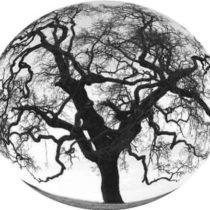Landscape Architecture for Landscape Architects › Forums › EDUCATION › The Artist Dillema
- This topic has 1 reply, 5 voices, and was last updated 9 years, 9 months ago by
mark foster.
-
AuthorPosts
-
May 27, 2014 at 12:57 am #152644
Anonymous
InactiveHi all,
I am just looking for some feedback/opinion on whether pursuing a MLA could be an appropriate option for someone like me. I have a background in Recreation Management, and continuing interests in ecology and creative pursuits, mostly in photography. I have worked for the Forest Service for five years, and have always had an interest in how to make the design of front/backcountry features more aesthetically pleasing and functional. Recently, I have become more involved in urban issues and have been dabbling in graphic design programs.
My main concern for the field is the sheer number of people who I have talked to who come from design/art backgrounds. I love creating things, but have never directly considered myself to be completely art based–more like science and people based, with as much creativity as I can throw in. I understand the possibilities for work environments and project types are broad, but I want to make sure I don’t get myself into something that doesn’t utilize my strengths.
In your experience, is a passion for design the building block for this profession (versus scientific interest or care for social welfare)? Is a significant lack of drawing skill a potential issue?
Thanks in advance for your input. I really appreciate all the insight I can glean from people already in the field.
May 27, 2014 at 10:54 am #152649mark foster
ParticipantAlissa,
Applied design is the building block of landscape architecture . Drawing is a communication tool. That said, I know lots of LAs who do neither–especially as they move up the ranks into office management/marketing/education etc, or move sideways into related professions.
So, you have interests in design, aesthetics, function, creativity, urban issues, and are science and people based? That sounds like a perfectly strange and conflicted recipe for a landscape architect. 🙂
May 27, 2014 at 12:00 pm #152648 Andrew Garulay, RLAParticipant
Andrew Garulay, RLAParticipantUltimately, the bulk of landscape architecture is design on the land. That come from an artistic and aesthetic driven mind, or a thought process more centered on how people use space, it can be ecologically driven, …., we can go on and on. One thing that almost always has to be part of the mix is the ability to transform what drives the design into a built landscape. If you want to know if this profession is a good one for you to be comfortable and successful in, I’d suggest exploring that part of landscape architecture where the rubber hits the road, so to speak. We have tons of philosophers, artists, environmentalists, people who want to help humanity, …. the ones who thrive are the ones who have the ability and desire to transform ideas into a set of directions for someone to build on the land so that the landscape functions to that end.
This profession is the bridge between things like “scientific interest” or “social welfare” and a built environment that functions in such a way to achieve the goals that are set by those interests that drive you. “Passion for design” is just another philosophy like “scientific interest” or “social welfare”. None of it matters if you can’t bridge from your passions or interests into a built landscape. Without that, you are just a cheerleader or philosopher and won’t get too far in this profession.
My suggestion is to look at those parts of the profession that make the transition to a built work. Grading and drainage, construction details, and other quantitative design courses are often the 2×4 that smacks enthusiastic students between the eyes leaving half of them to move on as fully functional landscape architects and many of the other half with much more limited opportunities and roles in the profession.
Find out what your aptitude is for the more technical side of site planning. This is a profession that is best served by people who are not either “right brain dominant” nor “left brain dominant” because most of it is about taking ideas right brain ideas and using left brain thinking to build something. That is what will make you or break you in this broad profession. The values or interests that motivate you are not a determination of whether you can thrive in this profession. Your ability to transform them are.
Any set of values that is shared by people developing the land or regulation the land does play a role in how many opportunities there are for you to participate in, but you can’t participate if you can’t be an asset to those involved. Philosophers and cheerleaders are not on too many payrolls in land development projects. Transformers are on every project.
May 27, 2014 at 8:53 pm #152647Anonymous
InactiveThank you both for taking the time to give sincere responses, Mark and Andrew.
I really appreciate the insight into what seems to be a dancing balance between a number of key skills–especially practical design skills and the ability to put concepts into action (I am positive that can be harder than it sounds). Honestly, the quantitative and technical side of the profession is probably where I would thrive, and it is encouraging to know that it would be a useful skill set.
I am also working on trying to find a few professionals that work where I currently live (Salt Lake), to get a better idea of the daily life in the profession. I think your input will be helpful when I am formulating questions to ask. I’m still a bit intimidated by working in a creative field–I think that will ultimately be up to me to decide if I want a career in design. Besides that, I am slowly and steadily accumulating as much knowledge as I can about what being an LA really means.
May 30, 2014 at 12:31 pm #152646 Edward FlahertyParticipant
Edward FlahertyParticipantHenry is helping you, Alissa, to understand that landscape architecture design does not occur only in your mind, on your drawing board or in your contract documents.
It actually fulfills itself in the construction and following maintenance. If these do not interest you, then there is no question of sustainability, there is no future for you in landscape architecture. Great design needs people who know how to build it, solve its problems during construction and nurture it through its life.
Hope this has been helpful. Over many years, I have seen bad design come out of an office and get ‘fixed’ in construction and maintenance; and I have seen great design get lost during construction and maintenance. The more you understand the people and ways of construction and maintenance, the better chance you will have to see your design become a living, thriving reality.
July 8, 2014 at 2:38 am #152645 ChristaParticipant
ChristaParticipantAlissa,
I graduated in 2010, and am still what I would consider early days as far as my LA career. However, as far as I can tell, there is a demand for the scientific knowledge. My undergrad is in forestry, and I seem to be doing alright. I have had some interest based on my background, and some don’t seem to count it one way or another.
An MLA takes about a year longer if you don’t have a background in design, at least where I went. If you add in a summer or two, that’s practically as long as an undergraduate (although some undergrad design programs are closer to 5 years, I have heard). I can’t tell a real significant difference in the regard held for an MLA vs a BLA, although I can attest to the cache a graduate degree brings in indirect ways.
As for drawing, that totally freaked me out as a student. I was so self conscious to draw in a studio setting with classmates all around me. I’ve taken some drawing classes, and now get decent compliments, unsolicited, from LAs on my drawing. I’m not Picasso, or anything, but I can pass. I can recommend Mike Lin’s course, and his son, Brian is really good, too. Also, computer graphics are pretty big now, which is a whole other ball of wax. You’ll want to know some Photoshop and Illustrator and SketchUp, and then maybe choose from the library of other really cool graphic programs (check other discussions for info). Once you apply to a program, start learning the software.
I think different schools emphasize form over function, or vice versa. Science is more functional, and art is more about form. Function tends a bit toward engineering, such as ecological or biosystems engineering, which may also be careers of interest. Design is a combination of the two. It took me a semester to begin to see design, which is to say to pay attention to the shadow, shape, and space around me everywhere. I was more focused on the ecology and management. But now that I do actually see, I love it. I enthusiastically recommend the profession of landscape architecture, because of the cool stuff I have already learned and get to do now at work, even though I’m still a newbie, so to speak. It’s a tough course of study, and the profession is hard to describe because it is so variable, market-driven, and broad, but it’s totally worth it.
-
AuthorPosts
- You must be logged in to reply to this topic.

